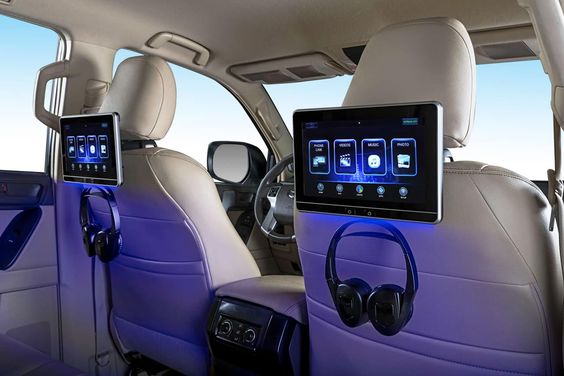Introduction:
In today's rapidly evolving automotive landscape, safety remains paramount. As technology advances, car manufacturers are constantly innovating to equip vehicles with cutting-edge safety features that protect drivers, passengers, and pedestrians alike. This comprehensive guide will delve into the best car safety features available in 2024, highlighting their functionalities and benefits. From advanced driver-assistance systems (ADAS) to passive safety features, we'll explore the latest advancements that are revolutionizing automotive safety.

Advanced Driver-Assistance Systems (ADAS):
ADAS technologies play a crucial role in enhancing driver awareness and preventing accidents. These systems utilize sensors, cameras, and software to monitor the vehicle's surroundings and assist drivers in various situations. Some of the most notable ADAS features include:
- Adaptive Cruise Control (ACC): ACC maintains a safe distance from the vehicle ahead by automatically adjusting speed.
- Lane Departure Warning (LDW): LDW alerts drivers when they drift out of their lane unintentionally.
- Automatic Emergency Braking (AEB): AEB automatically applies the brakes to prevent or mitigate collisions.
- Blind Spot Monitoring (BSM): BSM warns drivers of vehicles in their blind spots.
- Rear Cross-Traffic Alert (RCTA): RCTA alerts drivers of approaching vehicles when reversing.
Passive Safety Features:
Passive safety features are designed to protect occupants in the event of a collision. These features include:
- Airbags: Airbags deploy in a collision to cushion occupants and reduce the risk of injury.
- Seatbelts: Seatbelts are essential for restraining occupants during a collision and preventing them from being ejected from the vehicle.
- Anti-lock Braking System (ABS): ABS prevents the wheels from locking up during braking, allowing the driver to maintain steering control.
- Electronic Stability Control (ESC): ESC helps prevent skidding and loss of control by applying brakes to individual wheels.
Beyond the Basics:
In addition to the standard safety features, car manufacturers are introducing innovative technologies that further enhance safety. These include:
- Driver Monitoring Systems: These systems use cameras and sensors to monitor the driver's alertness and intervene if they detect signs of fatigue or distraction.
- Night Vision Systems: Night vision systems enhance visibility at night, allowing drivers to see objects and pedestrians that are not visible to the naked eye.
- Autonomous Emergency Steering: This feature can steer the vehicle to avoid a collision if the driver fails to react.
Conclusion:
The automotive industry is constantly evolving, and with it, the safety features available in vehicles are becoming more advanced and sophisticated. By understanding the latest safety technologies, drivers can make informed decisions when purchasing a new car and prioritize their safety and the safety of their passengers. As these technologies continue to develop, we can expect even greater advancements in automotive safety in the years to come.





